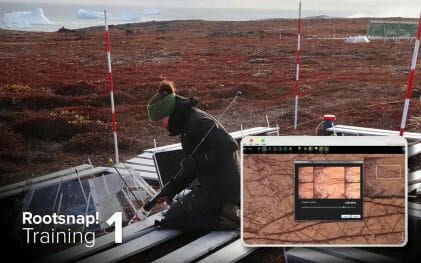June 6, 2023 at 5:21 pm | Updated June 16, 2023 at 7:46 pm | 2 min read
 Research Authors: Jinen Hojo, Hiroyuki Chiba, and Takashi Ikeda, Meiji University, Tokyo, Japan
Research Authors: Jinen Hojo, Hiroyuki Chiba, and Takashi Ikeda, Meiji University, Tokyo, Japan
Aspiring to shed light on the mysteries of plant growth, a team of researchers from Meiji University in Tokyo, Japan, undertook an interesting study to explore the effects of different liquid fertilizer concentrations on the growth of paprika roots in hydroponic cultures. Utilizing the powerful capabilities of CID BIO-science’s Root Imager (CI-600), the team carried out their experiment with careful precision and control.
Subscribe to the CID Bio-Science Weekly article series.
By submitting this form, you are consenting to receive marketing emails from: . You can revoke your consent to receive emails at any time by using the SafeUnsubscribe® link, found at the bottom of every email. Emails are serviced by Constant Contact
Hydroponic cultivation, a practice often used for growing paprika, typically involves high-concentration liquid fertilizer. Although one might expect such conditions to hinder plant growth, paprika plants thrive.
The team designed a custom hydroponic system to probe this phenomenon using a transparent acrylic pipe nested inside a surrounding PVC pipe. Thanks to the contrasting black color, a dark agricultural sheet inserted in the PVC pipe encouraged healthy root growth and improved visibility. The team then prepared liquid fertilizer in a container below and systematically pumped it into the plant’s root system.

The study focused on a particular variety of paprika, Capsicum annuum L. “Special,” cultivated in a greenhouse from February to May 2020.
Using the non-destructive and non-contact capabilities of the Root Imager, measurements were taken every ten days post-transplantation, in darkness, for optimal results. Images captured were then analyzed to determine the total root length, surface area, and volume.
To provide a comprehensive understanding, the team designed two experiments. The first measured root growth and dry weight with a liquid fertilizer concentration set at EC 1.5 ds m−1. The second experiment evaluated the impact of different salinity stresses on root growth at two levels of conductivity: EC 1.5 ds m−1, typical for hydroponics, and EC 2.5 ds m−1, used in practical paprika production.
Surprisingly, the results revealed that paprika root growth appeared unaffected by the concentration of liquid fertilizer used. High-concentration liquid fertilizers neither stunted nor boosted root growth. A comparison of total root length, surface area, volume, and dry weight showed a close correlation, indicating the reliability of the non-destructive Root Imager for capturing accurate growth data.
This ground-breaking research found that different liquid fertilizer concentrations may not influence paprika root growth. It also highlighted the effectiveness of the Root Imager in non-destructively measuring root growth. Future research in this field could lead to optimized conditions for hydroponic cultivation, opening new doors for sustainable farming practices.
Related Products
Most Popular Articles
- Transpiration in Plants: Its Importance and Applications
- Leaf Area – How & Why Measuring Leaf Area…
- How to Analyze Photosynthesis in Plants: Methods and Tools
- Plant Respiration: Its Importance and Applications
- The Forest Canopy: Structure, Roles & Measurement
- Stomatal Conductance: Functions, Measurement, and…
- Forest & Plant Canopy Analysis – Tools…
- Root Respiration: Importance and Applications
- The Importance of Leaf Area Index (LAI) in…
- Irrigating with Saline or Seawater






